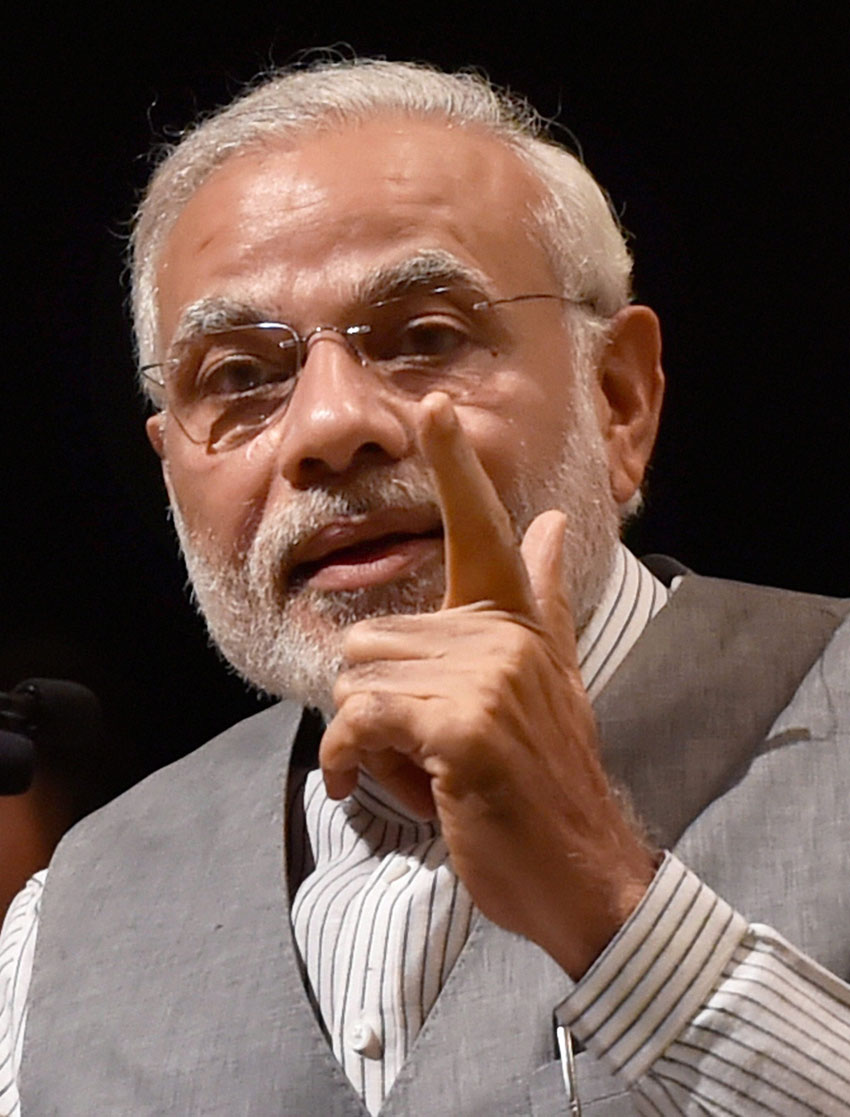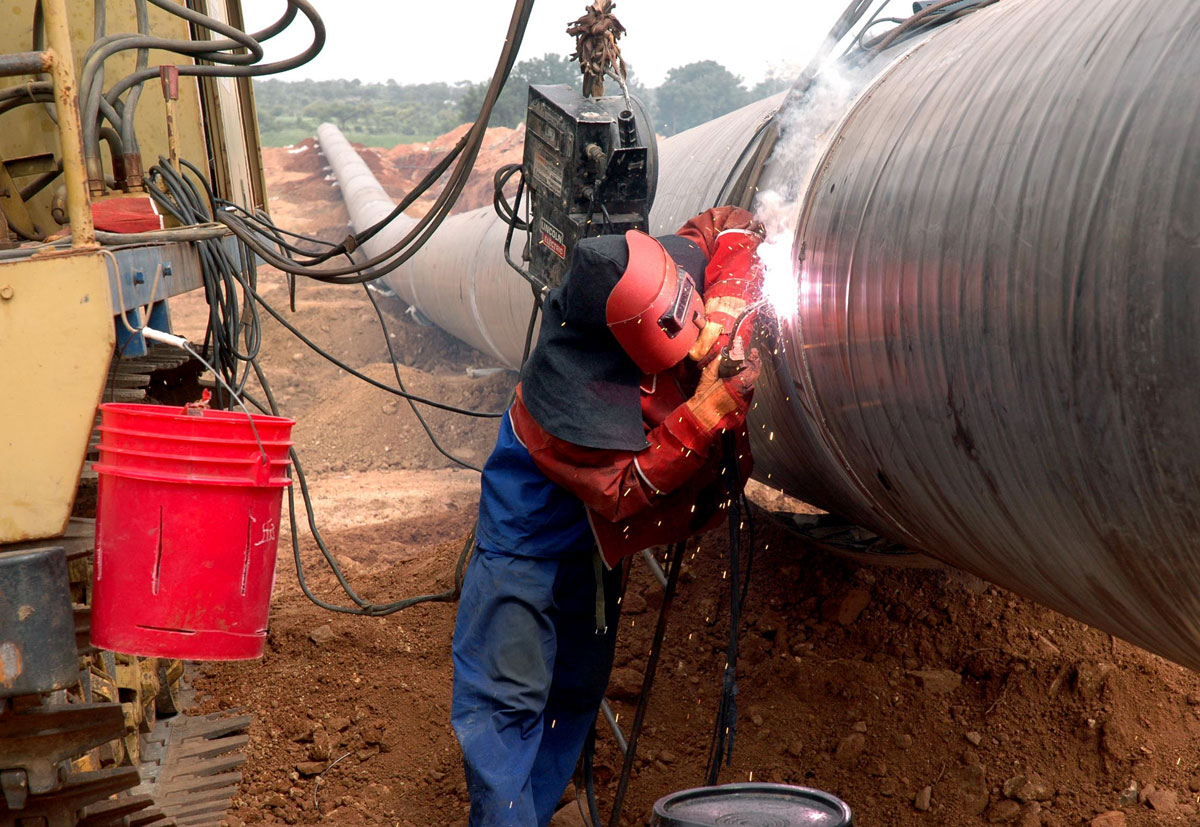MODI GOVERNMENT TAKES UP INFRASTRUCTURE CHALLENGE
File photo of engineers from China Petroleum Pipeline Material and Equipment Corporation welding carbon steel pipes as part of a gas pipeline for India’s Reliance Industries Ltd. at Medak some 175kms from Hyderabad. (Noah Seelam/AFP/Getty Images)
Indo-Pak relations have reached a flashpoint following the attack the Army base at Uri in which 18 soldiers were martyred. In an impassioned speech in Kerala, Prime Minister Narendra Modi mourned the killings and said the sacrifices of the soldiers will not be forgotten. While asserting that India will make Pakistan pay for the losses, which India did by way of a surgical attack, Sept. 28, Modi said that his government will continue with its mission to fight poverty in the country, writes Siddharth Srivastava. – @Siliconeer #Siliconeer #narendramodi #narendramodi @namo #namo #infrastructuredevelopment #India
Indeed, even as a war-like situation emerges in the subcontinent, New Delhi has announced plans to back the country’s biggest gas pipeline project that seeks to link five eastern states. These states also happen to be the most impoverished and some of the most densely populated areas in the world. Together, they account for 40 percent of India’s 1.3 billion population.
The cabinet committee on economic affairs (CCEA) that is headed by Modi approved a capital grant of Rs 51.76 billion for state-owned gas utility GAIL’s 2,539-kilometer long Jagdishpur-Haldia and Bokaro-Dhamra (JHBDPL) pipeline, the country’s biggest natural gas pipeline project that will be able to carry 32 million standard cubic meters of gas per day. New Delhi’s investment is 40 percent of the total cost of the project which is Rs. 129.4 billion. Jagdishpur is located in Uttar Pradesh, Haldia in West Bengal, Bokaro in Jharkhand, and Dhamra in Odisha. “The JHBDPL project will connect the eastern part of the country with the national gas grid. It will ensure availability of clean fuel to the industrial, commercial, domestic and transport sectors in the states of Uttar Pradesh, Bihar, Jharkhand, Odisha and Bengal,” an official statement said.
The CCEA also approved the concomitant development of city gas distribution networks in Varanasi, Patna, Ranchi, Jamshedpur, Bhubaneswar, Kolkata, Cuttack and others that will be fed by the JHBDPL pipeline. These city gas projects will be executed by GAIL in collaboration with concerned state governments, benefitting 12.5 million consumers, the CCEA said. New Delhi has been focusing on development in the eastern and North East regions of the country due to their backwardness and lack of gas delivery mechanisms for consumption by household, industrial and auto sectors. This is unlike western and southern states where energy supplies are accessible via piped gas for households and CNG stations for the transport sector. A pan-Indian gas delivery infrastructure comprising pipelines, LNG terminals and city distribution networks, is essential to raise the share of natural gas in India’s energy consumption mix, which is currently 6.5 percent and far below the global average. India is targeting to raise the level to 15 percent.

Infrastructure challenge
Indeed, infrastructure, whether it is ports, roads, pipelines, inland waterways or power plants, including renewable energy, has been a focus area of the Modi government. Critical considerations to deliver on the promises are finance, co-opting state governments and transparent land acquisition processes where the owner is given a fair deal. So far, New Delhi has done well in winning support of states, including those ruled by opposition parties to push through key economic reforms. This is reflected in the passage of the Goods & Service Taxes (GST) Bill, a far-reaching indirect tax reform that will simplify India’s complex taxation structure; New Delhi’s transparent Ujjwal Discom Assurance Yojana (UDAY) scheme for revival of debt-stressed power distribution companies (discoms) has also been backed by the states. Financial support for large projects involving huge capital outlays is equally important. In a recent note, credit rating agency CRISIL has said public intervention is essential in parts of the country for reasons such as backwardness, geographic disadvantage or strategic importance of border areas.
Backing the JHBDPL project and related infrastructure is a recognition that gas is a clean and versatile fuel due to multiple usage that ranges from auto as CNG, cooking gas as LPG, power generation and feedstock for fertilizer units, agro processing and petrochemicals. It is thus important for India to build the necessary wherewithal for a more widespread dispersal of gas. The CCEA approval to set up city gas distribution networks addresses fears expressed earlier by GAIL that there may not be enough demand for the gas carried by JHBDPL. The one big challenge that an interstate pipeline of the scale of JHBDPL faces in eastern India is security due to which the project that was approved by the government in 2007 has not made much progress so far. The marginalization of large sections of the population in eastern India, particularly in states such as Jharkhand and Bihar has resulted in the rise of leftist Maoist rebels and other anti-establishment insurgencies. Dealing with Maoists is seen as the biggest internal security and law and order challenge that paramilitary forces and any government of the day in India faces today.
U.P., meanwhile, is plagued by frequent caste and communal violence. Another big bottleneck is land acquisition, which is a very tricky and sensitive political matter due to disagreements about fair pricing and other benefits. Hundreds of thousands of kilometers of highway, rail and pipeline construction across India are held up or severely delayed due to litigation linked to acquiring farm land. With each state following their own set of rules, the JHBDPL project will need to negotiate a maze that many have failed to do in the past. While the infusion of capital by New Delhi is welcome, there is no reason to believe that the completion timelines will stick.


